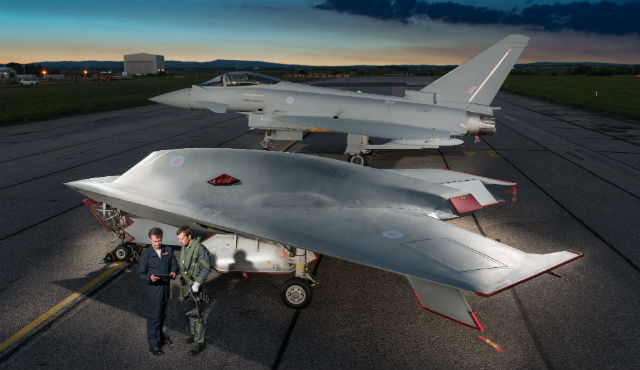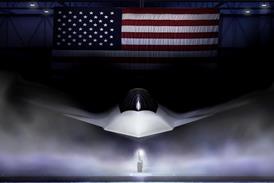BAE Systems lifted the veil on a new series of flight tests with the Taranis unmanned combat air vehicle demonstrator on Tuesday, as the UK and French defence ministries also strengthened their commitment to jointly study a future operational platform.
The highly classified Taranis was first flown at an undisclosed foreign location in August 2013, but it was not until February that BAE and its industry partners – which include Adour 951 engine supplier Rolls-Royce – were allowed to disclose limited details about a first series of flights.
Speaking at the show on 15 July, Chris Garside, BAE’s engineering director for future combat air systems, revealed that a second series of test flights were performed between late 2013 and early 2014. These included flying the demonstrator in a “fully stealthy configuration, making it virtually invisible to radar”, the company says.

BAE Systems
The aircraft’s communications antennas were replaced with ‘signature control variants’, and an air data boom installed on the nose for earlier tests removed in favour of using a conformal flight data gathering system. The latter installation had “very little impact on the radar cross section”, Garside says.
Key elements of the trial included showing the aircraft’s ability to autonomously navigate to a search area before detecting a target using “representative sensors” and generating an attack profile for approval by an operator. “We were particularly pleased with the handling and performance of the aircraft,” says Garside, who adds that “flight trials have continued to meet all of the programme objectives.”
Taranis is now back in the UK undergoing maintenance, and discussions are continuing with the MoD with regard to further planned flight testing, BAE says.
Meanwhile, the UK and France signed a two-year feasibility phase deal at the show linked to a future combat air system programme. Worth £120 million ($205 million), the activity is to involve airframers BAE and Dassault, propulsion system suppliers R-R and Snecma and sensor and communications specialists Selex ES and Thales. It also will draw on the companies’ experiences with the Taranis and Neuron demonstrators.

BAE Systems
Source: Flight Daily News


























